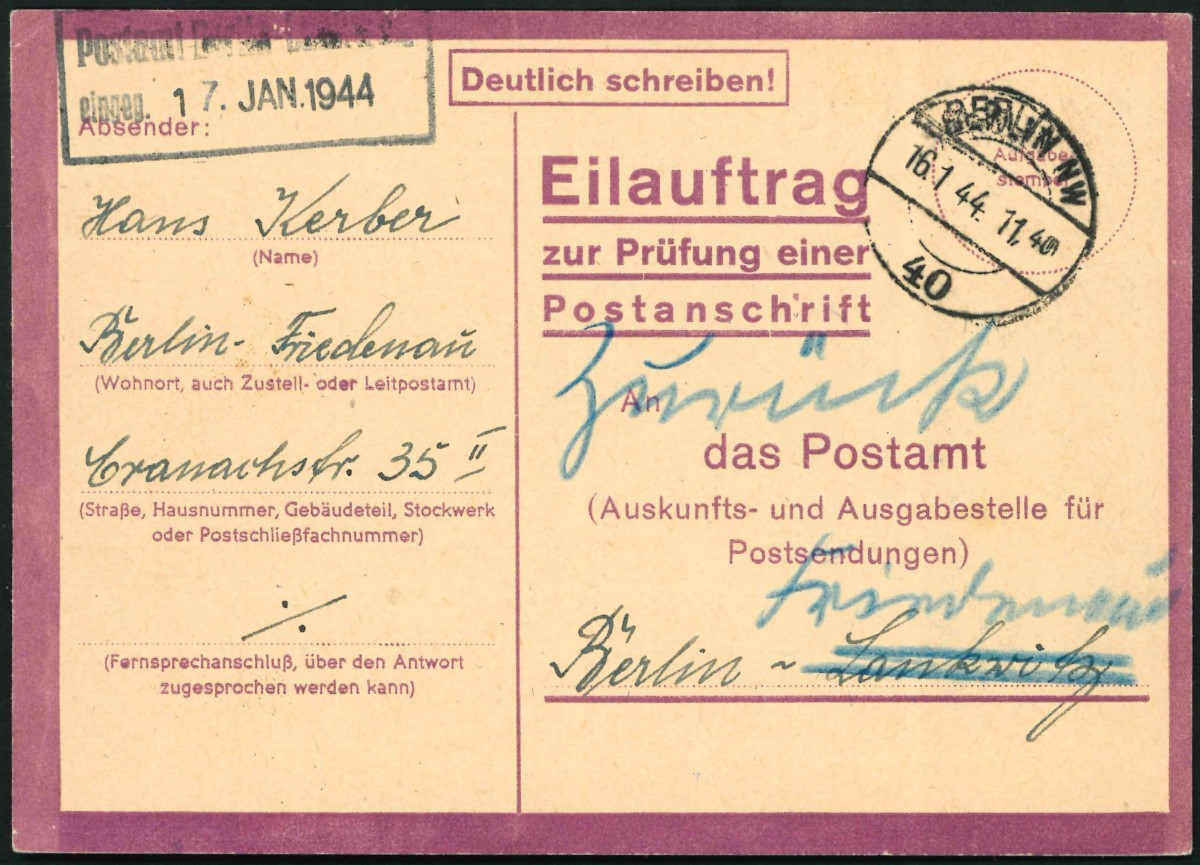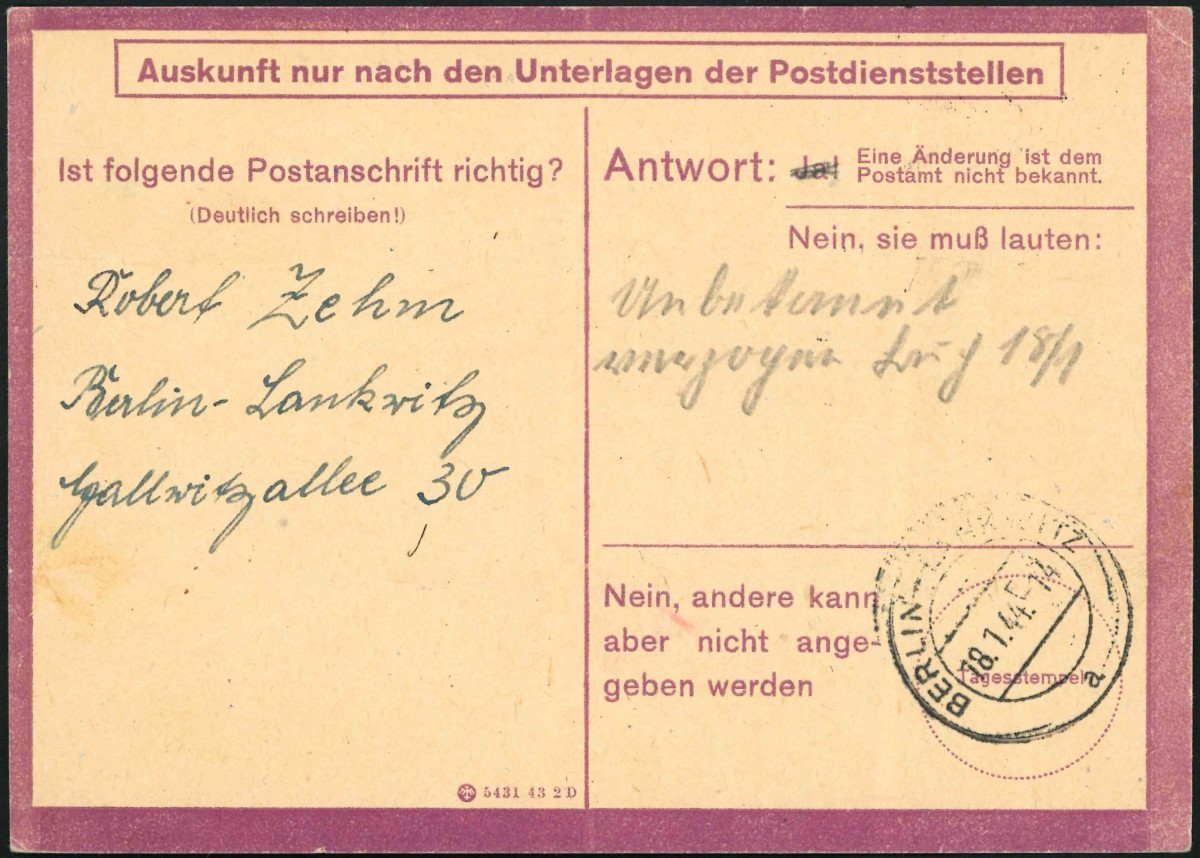PROPAGANDA POSTCARDS
(1943)
This page was last updated
18-Feb-2025 09:11

FREE EMERGENCY POST / SIGNS OF LIFE
(1943)
BACKGROUND: In order to help Germans find their loved ones after a bombing raid, the Nazi's introduced a series of free emergency post cards (commonly known as 'signs of life cards') that could be used to determine the whereabout of family or friends. There were three versions which can be determined by the code on the reverse of the card, adjacent to the vertical divider. The State Printing Works in Berlin printed cards with either a '5431 43 2D' or a '21400 43 2D' code, and the State Printing Works in Vienna printed a single card with code '4306 43'.




ABOVE LEFT: 5431-43-2d (Berlin)
ABOVE RIGHT: 21400-43-2D (Berlin)


ABOVE: 5431-43-2D (Austria)
The cards were available free of charge from selected post offices and Nazi Party offices, for up to four days after the official Armed Forces Report was broadcast over the radio, confirming that a heavy Allied bombing raid had occurred on a particular city. The sender then had up to 10 days to send his request to the local post office.
There were three types of card in circulation that could be used for either civilian or Feldpost enquiries. These were colour coded with either green, red or violet borders.

1. EILAUFTRAG ZUR PRUFUNG EINER POSTANSCHRIFT
RUSH ORDER TO CHECK A POSTAL ADDRESS
COLOUR: VIOLET
These Eilaufstragskarten or Express Enquiry Cards were two sided cards that were free to send for a limited time after an Allied bombing raid.
On the right-hand pane the sender would enter the address of the post office to which he was asking for information. In the case of the card below, an incorrect post office address was entered, which was then subsequently amended in blue pencil and redirected to the correct post office.
In the left-hand pane the sender would enter his personal details with address and telephone number (if he had one), so that the post office knew where to send the reply. In the case of the card below the person asking for information was a Hans Kerber located in BERLIN-FRIEDENAU.



On the reverse side the sender would enter the details: name and address, of the person he/she was looking for. In this case a Mr. Robert Zehn. Then on the right-hand pane the post office would indicate the result of their search, and the card would be returned to sender, thus providing the last known location of Mr. Zehn. Considering Germany was being repeatedly bombed during this period it is testament to the German post office efficiency that the entire process only took two days.
I am not able to decipher the reply clearly, but it appears that the response was not encouraging. The ideal reply would have been: "Ja! Eine Ãnderung ist dem Postamt nicht bekannt." - 'Yes! The post office is not aware of any change'. But in this case that has been crossed out and a "Nein, sie muβ lauten:" - 'No, it has to be:' has been noted with something like, not known as of 18th Jan.

REFERENCES
1. Third Reich Study Group News Sheet No. 133 and 1342. Michel Handbuch-Katalog Deutsche Feldpost 1937-1945, ISBN: 3 87858 452 0, third issue: pages 173 to 176


